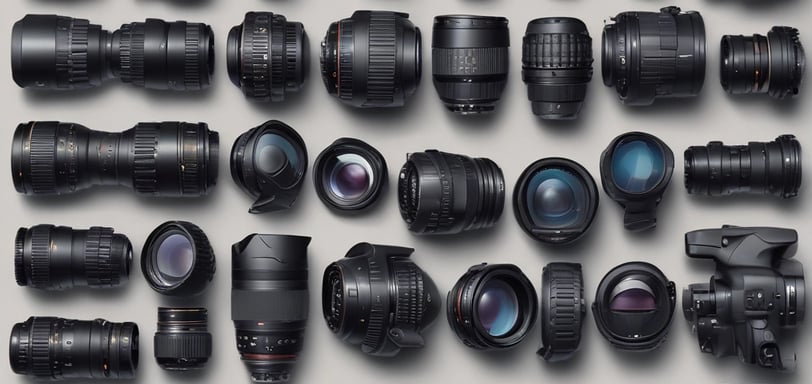
Comparing Camera Lenses: Pros and Cons of Different lenses
Selecting the appropriate camera lens can significantly impact your photography. There are pros and cons of different lenses. The best choice depends on your personal preferences and photographic goals.
PROS AND CONS OF CAMERA LENSES
thru this lenz
2/9/2025


Quick Note: As an Amazon Associate, I earn from qualifying purchases.
Introduction
Now that you have familiarized yourself with the different types of lenses, we will look at their pros and cons to help you make an informed decision.
Prime Lenses
Prime lenses are fixed focal length lenses, which typically offer better image quality than zoom lenses. Common focal lengths include 35mm, 50mm, and 85mm. Great examples of these are the Canon RF 50mm f/1.2 L, Nikon Z Nikkor 50 mm f/1.8 S, or Sony FE 50 f/1.2 GM lens.
Pros:
Outstanding optical quality with less distortion.
Wider apertures allow for better low-light performance and beautiful bokeh (blur) effects.
Usually more affordable compared to zoom lenses.
Cons:
They have limited versatility since they don't zoom.
You may need to move closer or farther from your subject physically.
Multiple lenses may be required for varying shooting conditions, increasing gear to carry.
Zoom Lenses
Zoom lenses cover a variety of focal lengths and are designed to provide flexibility in framing shots. They range from wide-angle to telephoto options such as the Canon EF 70-200mm f/2,8L III USM, Nikon Z 24-70mm f/2.8 S, and Sony FE 24-70mm f/2.8 GM II.
Pros:
Versatile, enabling you to capture a range of shots without changing lenses.
Convenience of adjusting focal lengths quickly in dynamic environments.
Ideal for travel, as they reduce the number of lenses you have to carry.
Cons:
Generally heavier and bulkier than prime lenses, making them less portable.
Image quality may not be as high as prime lenses, especially at extreme focal lengths.
Often have smaller maximum apertures, limiting performance in low light.
Wide-Angle Lenses
Wide-angle lenses are essential for capturing expansive scenes, such as landscapes or architecture. They typically have focal lengths less than 35mm such as the Canon RF 15-35mm f/2.8L IS USM, Nikon Z 14-30mm f/4.5, and Sony FE 16-35mm f/2.8 GM.
Pros:
Exceptional field of view, ideal for capturing more in a single frame.
Creates a sense of depth, enhancing perspective in your images.
Great for tight spaces where it may be difficult to take a step back.
Cons:
Can introduce distortion, particularly around the edges of images.
Objects near the lens may appear larger, potentially leading to compositional issues.
Not ideal for portrait photography due to distortion of facial features.
Telephoto Lenses
Telephoto lenses are designed to capture subjects at a distance, typically with focal lengths of 70mm and above. They are popular among wildlife and sports photographers. Great examples are the Canon EF 70-200mm f/2.8L III USM, Nikon AF-S Nikkor 70-200mm f/2.8E FL ED VR, and Sony FE 100-400mm f/4.5-5.6 GM OSS.
Pros:
Allows for close-up shots without disturbing your subject.
Great for isolating subjects and achieving beautiful background blur.
Useful for capturing fast-moving subjects with compression.
Cons:
Heavier and more expensive than shorter focal length lenses.
Can be challenging to handle without a tripod due to vibration.
Limited field of view, making composition more challenging.
Conclusion
Understanding the pros and cons of different camera lenses can guide you in selecting the right one for your specific photography needs. Whether you choose a prime, zoom, wide-angle, or telephoto lens, each offers unique advantages that can enhance your creative process.


Affiliate Disclosure
As an Amazon Associate, I earn from qualifying purchases. This means that if you click on a link to buy a product and make a purchase, I may receive a small commission at no extra cost to you. My goal is to provide you with helpful reviews and recommendations based on my personal experience, and I only promote products that I believe will add value to you. Thank you!
© 2024. All rights reserved.
